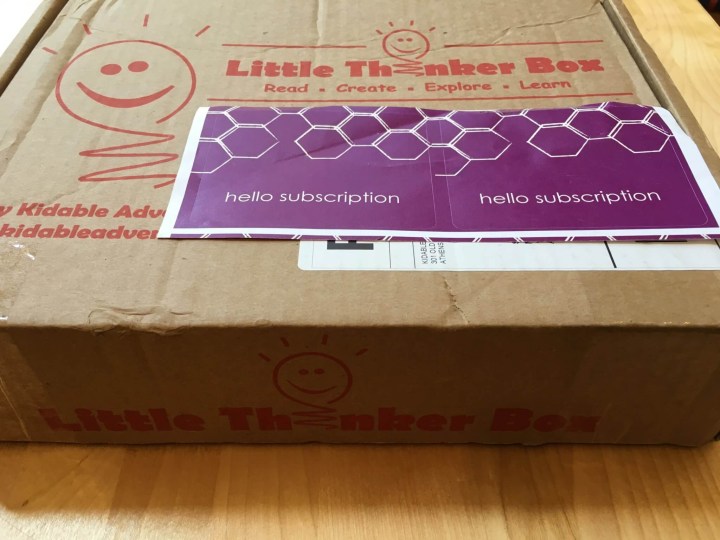 Little Thinker Box by Kidable Adventures is a preschool subscription box for ages 3-6. The Little Thinker Box includes four components: Read, Create, Explore and Learn. The Learn component is divided into three different levels: Head Start, PreK and Kindergarten. Choose the level that’s right for your child!
Little Thinker Box by Kidable Adventures is a preschool subscription box for ages 3-6. The Little Thinker Box includes four components: Read, Create, Explore and Learn. The Learn component is divided into three different levels: Head Start, PreK and Kindergarten. Choose the level that’s right for your child!
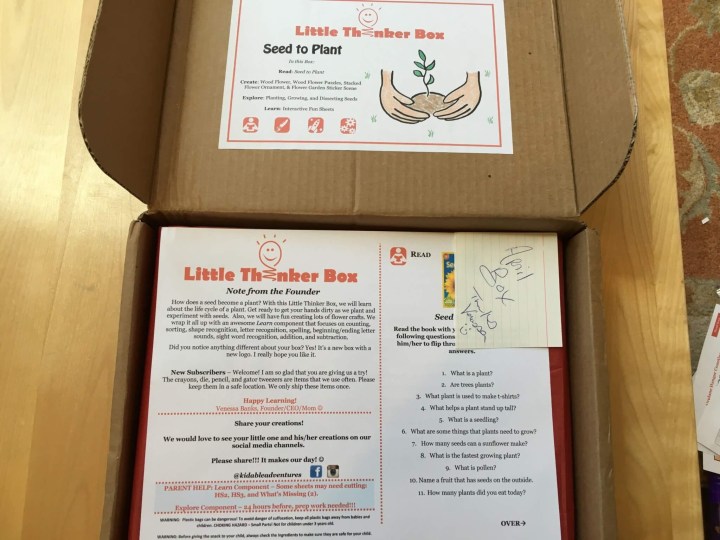 The April theme was Seed to Plant. I was delighted to see this box arrive along with May’s Doodlebug Busy Bag. I also loved the new look to the box!
The April theme was Seed to Plant. I was delighted to see this box arrive along with May’s Doodlebug Busy Bag. I also loved the new look to the box!
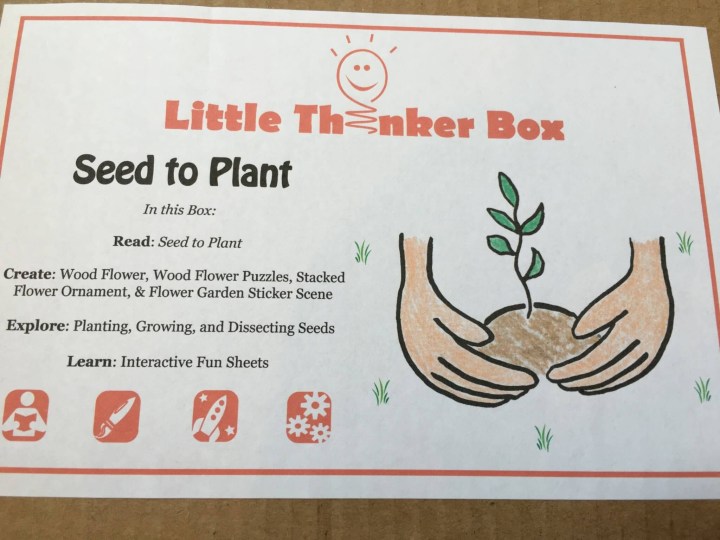 The box is always packed in a really neat manner — the tissue makes for a nice presentation, and the lesson segments are explained well in the introductory letter to parents. The attached outline makes it easy to organize the big picture of what you’ll cover each month: reading, creating, exploring and learning.
The box is always packed in a really neat manner — the tissue makes for a nice presentation, and the lesson segments are explained well in the introductory letter to parents. The attached outline makes it easy to organize the big picture of what you’ll cover each month: reading, creating, exploring and learning.
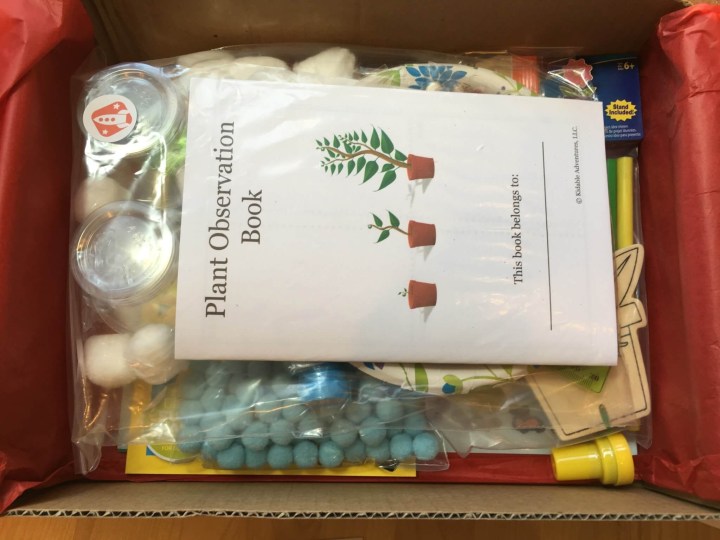 Although the packages no longer come grouped in plastic bags by components, you could still easily do a component per week, or you could work through them all on a rainy weekend.
Although the packages no longer come grouped in plastic bags by components, you could still easily do a component per week, or you could work through them all on a rainy weekend.
All the actual instructions plus the parental guidance is included, along with all the supplies! The Read, Create, Explore, and Learn format was designed based on customer and expert feedback. I like the bit of structure it lends to the boxes — the numerous activities are more manageable conceptualized in smaller bites.
Read
“Seed to Plant” by National Geographic Kids ($2.41) was a great introduction to plants and their importance! My son and I enjoyed reading it together.
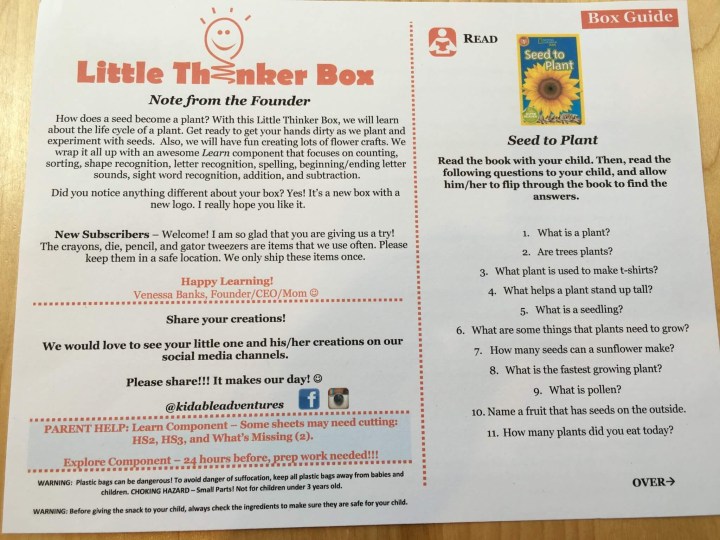
I love how the folks behind Little Thinker Box included some questions to ask your child once you’ve finished reading the book together! The questions were listed on the information card above. While my son enjoyed answering the questions, I appreciated how they reinforced what he read.
Create
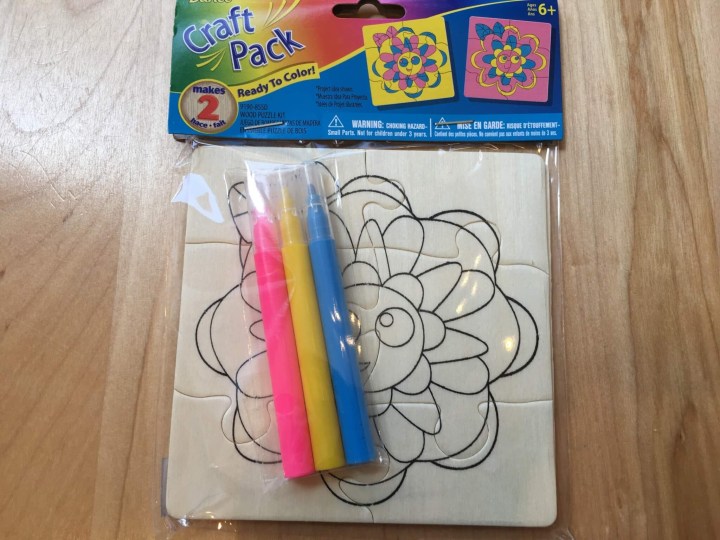 This month’s package included four crafts for the kids to make at home: coloring a puzzle, coloring a flower and pot, making a flower hanger and decorating a spring scene.
This month’s package included four crafts for the kids to make at home: coloring a puzzle, coloring a flower and pot, making a flower hanger and decorating a spring scene.
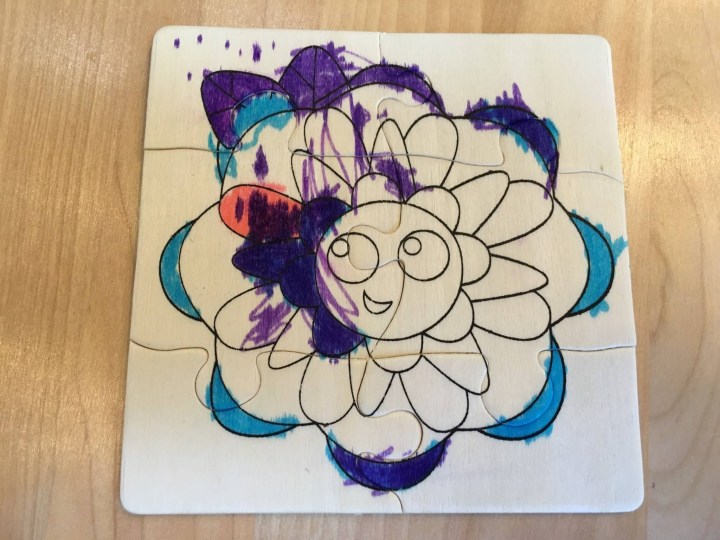
My son enjoyed coloring for a time, but then lost interest and decided he was done.
 He was more excited to color in the flower pot, but again, after five or ten minutes, he stopped and decided that he was done.
He was more excited to color in the flower pot, but again, after five or ten minutes, he stopped and decided that he was done.
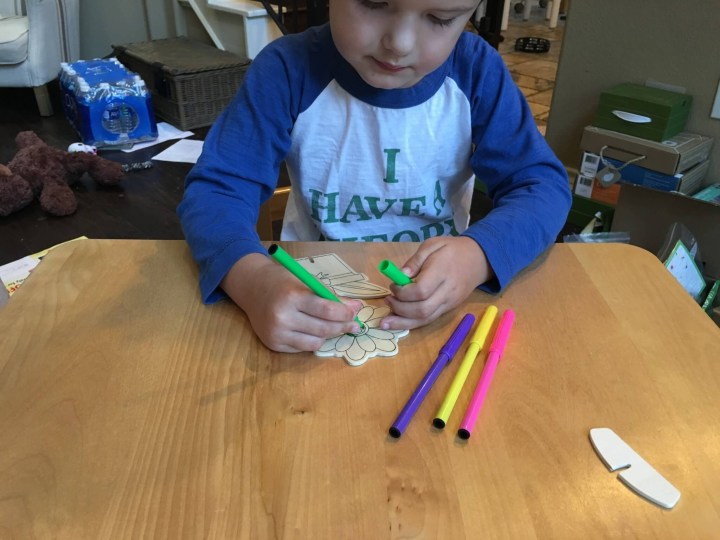 The final product.
The final product.
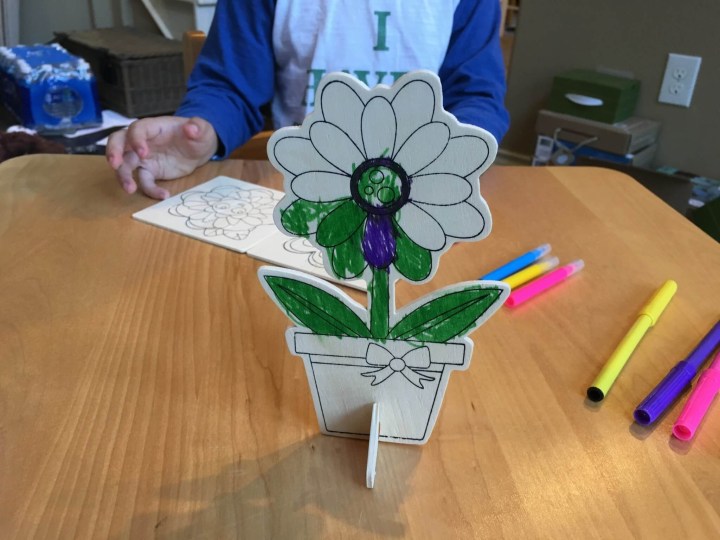
He was more excited to complete this Doodlebug Busy Bag-type craft.
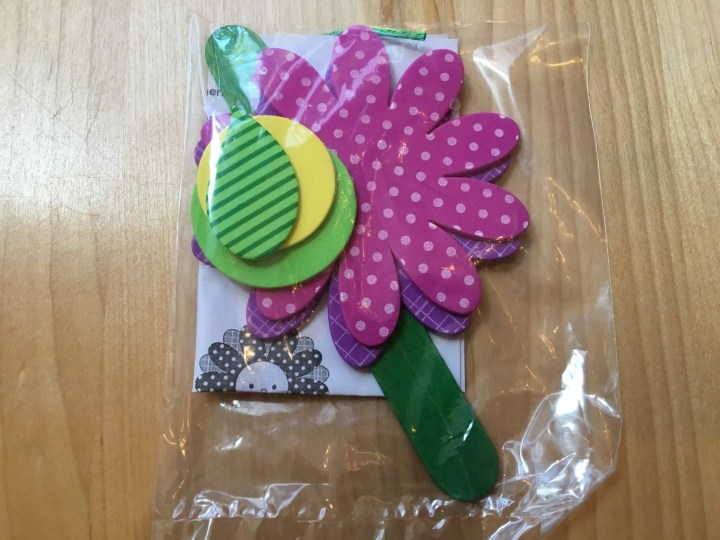 Here is a shot of all of the items included.
Here is a shot of all of the items included.
 This activity required a lot of peeling and sticking.
This activity required a lot of peeling and sticking.
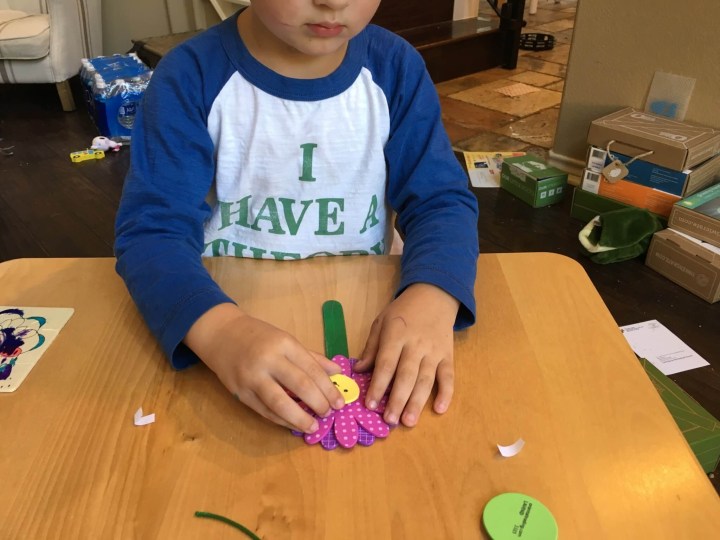 He loves these crafts!
He loves these crafts!
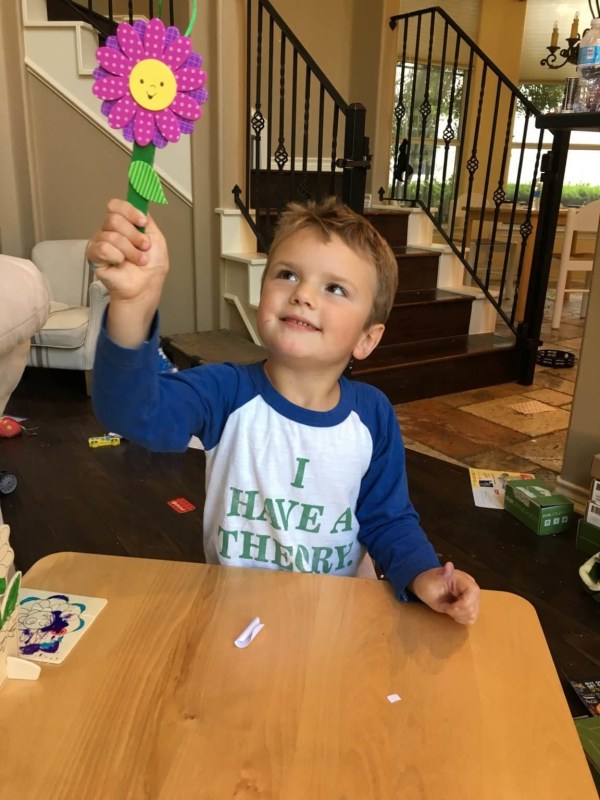 Finally, he decorated a spring scene with the enclosed stickers.
Finally, he decorated a spring scene with the enclosed stickers.

He loves stickers!
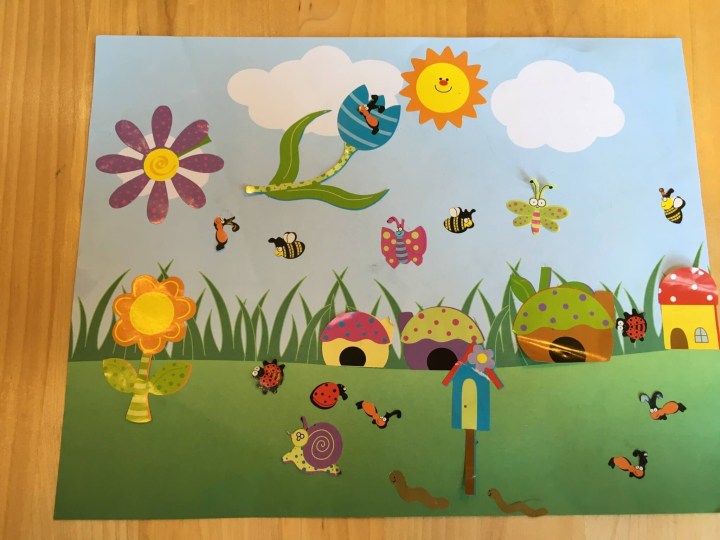
I loved the inclusion of a bunch of worm and insect stickers. This helped to reinforce their importance in the garden.
Explore
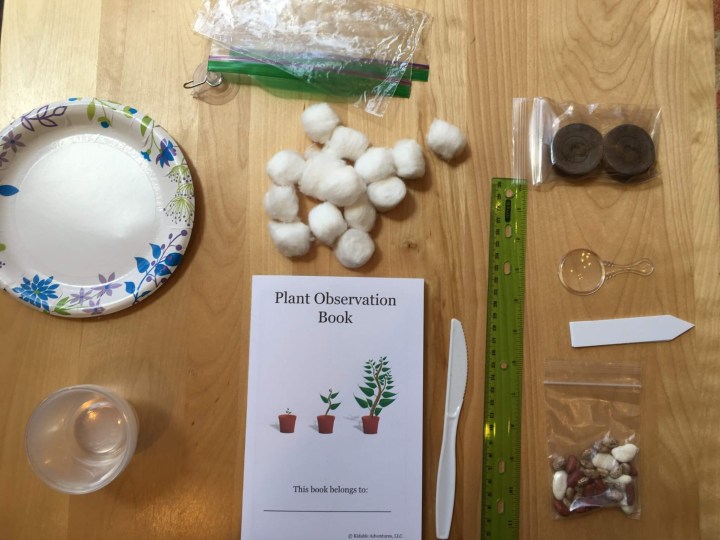 The Explore segment encourages creative play. This month, though, it had a distinct sciencey bent, which I loved! This month, children dissect seeds and plant seeds in different media, watching them grow over twelve days and recording what they see. We completed the set up. We’ll enjoy observing what happens over the next twelve days on our own!
The Explore segment encourages creative play. This month, though, it had a distinct sciencey bent, which I loved! This month, children dissect seeds and plant seeds in different media, watching them grow over twelve days and recording what they see. We completed the set up. We’ll enjoy observing what happens over the next twelve days on our own!
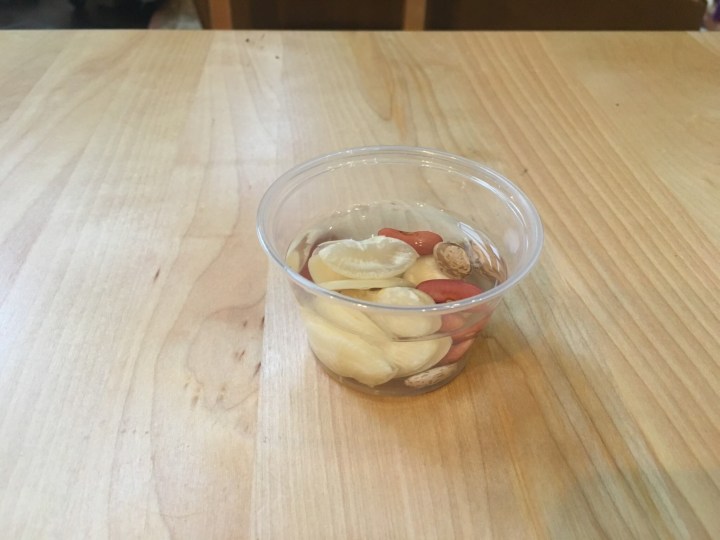
The night before we began, we placed twelve seeds into a cup of water.
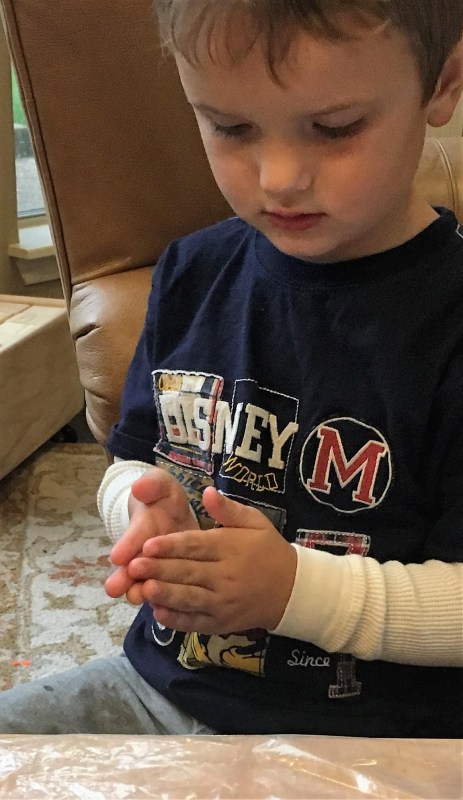
The next morning, my son rubbed one of each type of seed between his hands to begin his seed dissection. He thought the seed’s outer covering was very cool! Before completing the dissection, he didn’t know that seeds had an outer covering; he predicted that the seed would look just like the outer covering throughout. He thought it was awesome that they look so different inside!
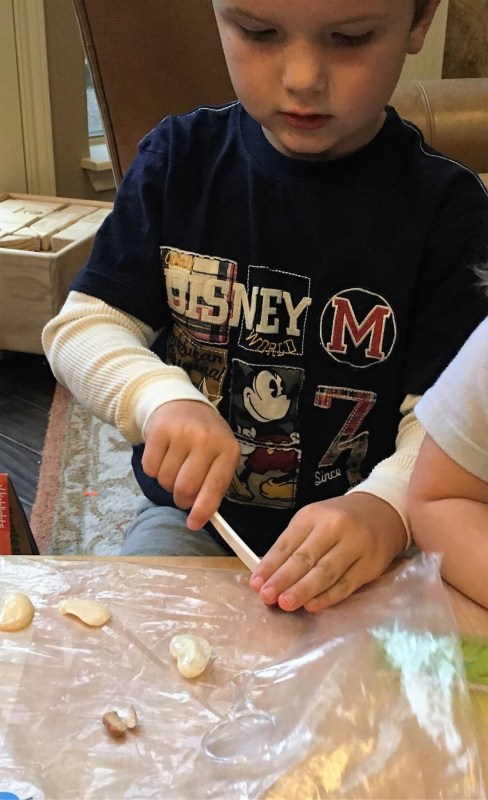 Next, my son used the enclosed knife to cut three of the seeds in half lengthwise. Once open, we talked about the different parts of a seed. This was really neat!
Next, my son used the enclosed knife to cut three of the seeds in half lengthwise. Once open, we talked about the different parts of a seed. This was really neat!
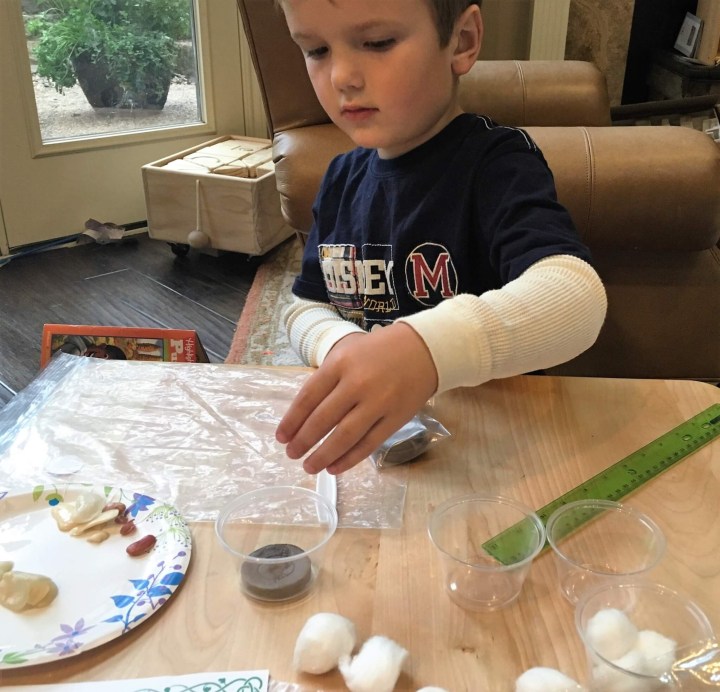
Then we got to work planting. The first order of business was to expand the soil pellets in the enclosed cups.
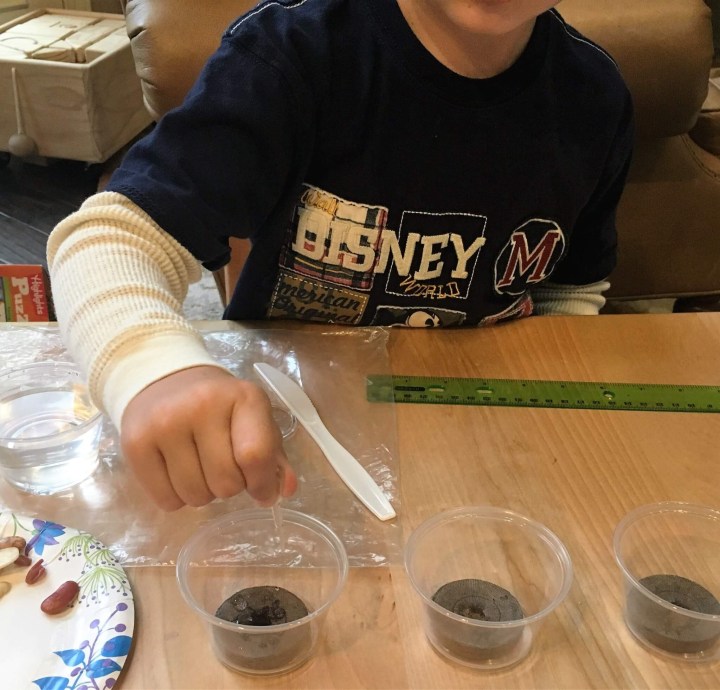
My son started out using a pipette to water the soil, which, although a great fine motor activity, took forever. After spending five minutes with the pipette, my son poured water over the soil pellets. Bringing them all up to 2″ in height required two cups of water.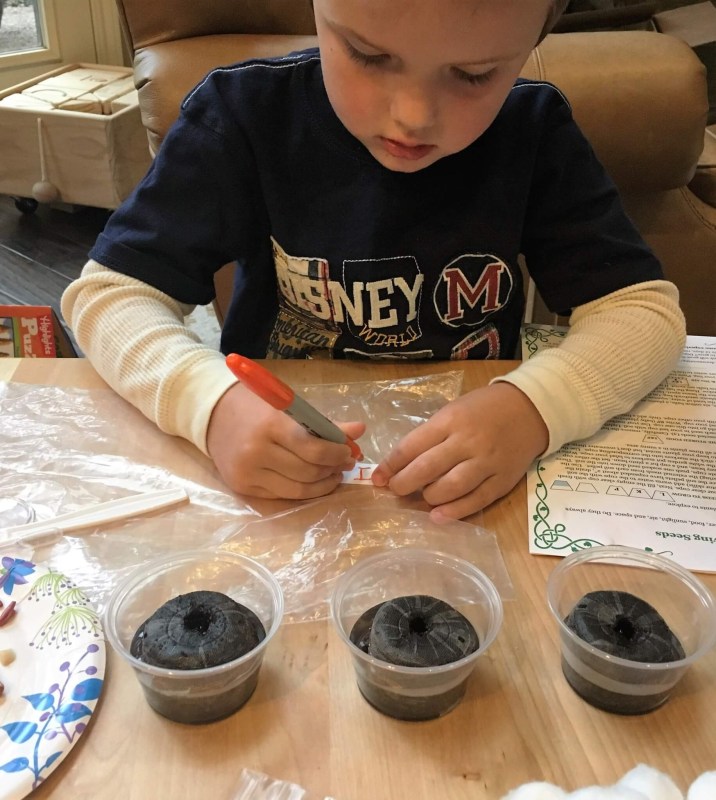 As the pellets were rising, my son began writing on the enclosed labels–“L” for lima bean, “K” for kidney bean, “P” for pinto bean and “BP” for baby plants.
As the pellets were rising, my son began writing on the enclosed labels–“L” for lima bean, “K” for kidney bean, “P” for pinto bean and “BP” for baby plants.
 After labeling the cups and draining the excess water from the soil pellets, my son tore away the mesh holding the soil pellets together.
After labeling the cups and draining the excess water from the soil pellets, my son tore away the mesh holding the soil pellets together.
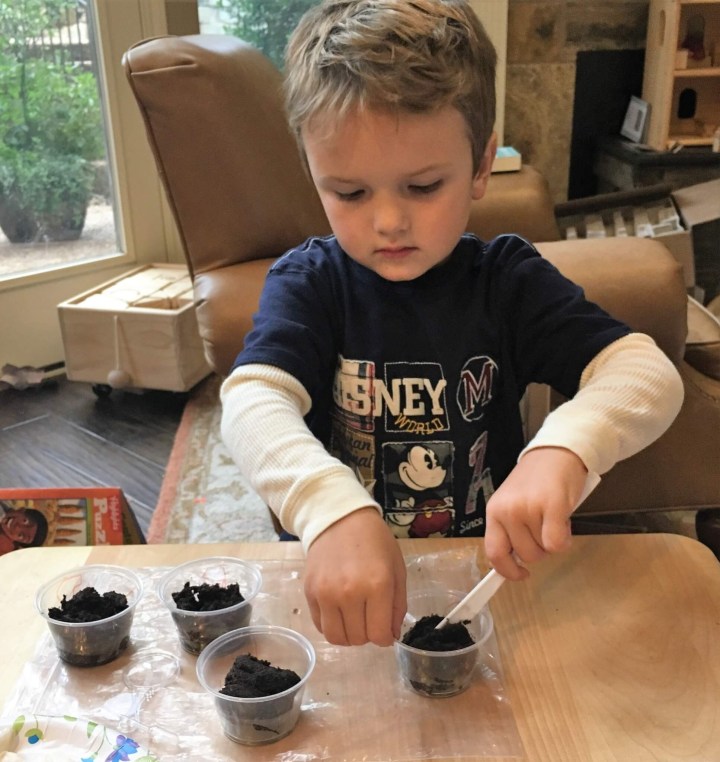 Then he used the enclosed knife to further separate the soil originally contained in the pellets.
Then he used the enclosed knife to further separate the soil originally contained in the pellets.
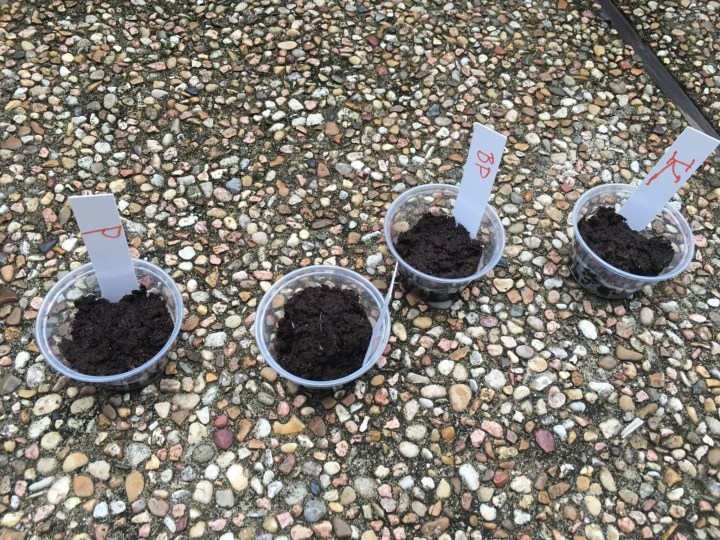 Finally he planted his seeds, placed his labels in the corresponding cup and put all four cups outside so they could get some sunlight. We’ll monitor their growth over the next twelve days.
Finally he planted his seeds, placed his labels in the corresponding cup and put all four cups outside so they could get some sunlight. We’ll monitor their growth over the next twelve days.
 Next, my son planted another set of beans, this time without soil. We’ll see what happens. (Note: we actually did this twice; we planted one set of seeds with everything but soil and another without soil, air or sunlight).
Next, my son planted another set of beans, this time without soil. We’ll see what happens. (Note: we actually did this twice; we planted one set of seeds with everything but soil and another without soil, air or sunlight).
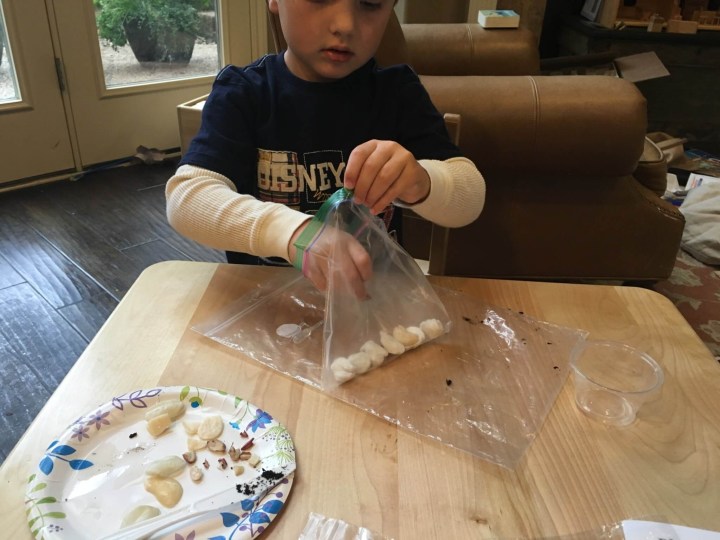 My son planted his seeds along with wet cotton balls inside a ziplock bag.
My son planted his seeds along with wet cotton balls inside a ziplock bag.
 He hung the ziplock bag on our back door.
He hung the ziplock bag on our back door.
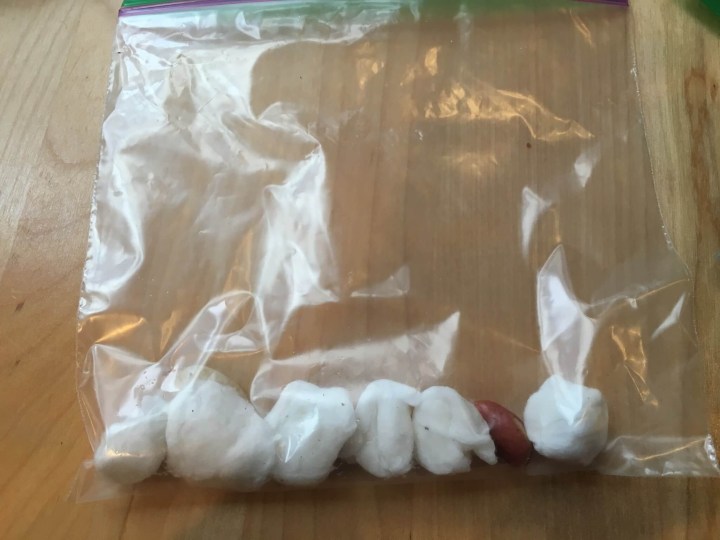 He sealed up the other bag and put it in a dark room. We can’t wait to see which set up grows the best! My son has surmised that the seeds that he planted outside will grow best, but he thinks the seeds that we hung by the back door will grow too. He thinks the seeds that we sealed and placed in a dark room will not grow. We’ll have to see! Science at work!
He sealed up the other bag and put it in a dark room. We can’t wait to see which set up grows the best! My son has surmised that the seeds that he planted outside will grow best, but he thinks the seeds that we hung by the back door will grow too. He thinks the seeds that we sealed and placed in a dark room will not grow. We’ll have to see! Science at work!
Learn
The learn segment brings some additional structure to the theme, focusing the kids on school-style worksheets. (Although it had been a workbook, due to parent requests, the founder changed the workbook format to worksheets.) It’s a great tool for focusing the fun in a way that translates well to a more formal academic setting.
The activities this month included games that required a lot of fine motor skills! Many required picking up small items with the enclosed alligator tweezers. My son had a lot of fun with the activities! The activities in the box ranged in difficulty from Headstart to PreK to Kindergarten, so children could pick and choose which activities were best suited to their own developmental needs. Overall, the learn section this month felt as if it were a collection of fun games. We both loved that!
I love this box and all the updates! The new format is solidly organized and well-planned. The included snack is a nice touch, and, most important, my preschooler was engaged and thinking the whole time we were doing the activities. This box is designed to provide activities over the course of a month. We look forward to monitoring the growth of the seeds we received with this month’s Little Thinker Box. We can’t wait to see what they send out next month!
Visit Little Thinker Box to find out more or to subscribe!
The Description: Monthly subscription service for children preparing to enter Pre-K or Kindergarten. Each month the child is sent a themed-based activity box that focuses on reading, writing, math, science, and other skills; using fun games, crafts, and experiments. Each month’s theme is a surprise!
The Price: $29.99 per month
The Categories: Kids Craft & Activities Subscription Boxes, Kids Educational & Learning Subscription Boxes,Subscription Boxes for Kids. Kids Subscription Boxes with Books, Subscription Boxes for Preschoolers.
The Reviews: See all our Little Thinker Box Reviews.
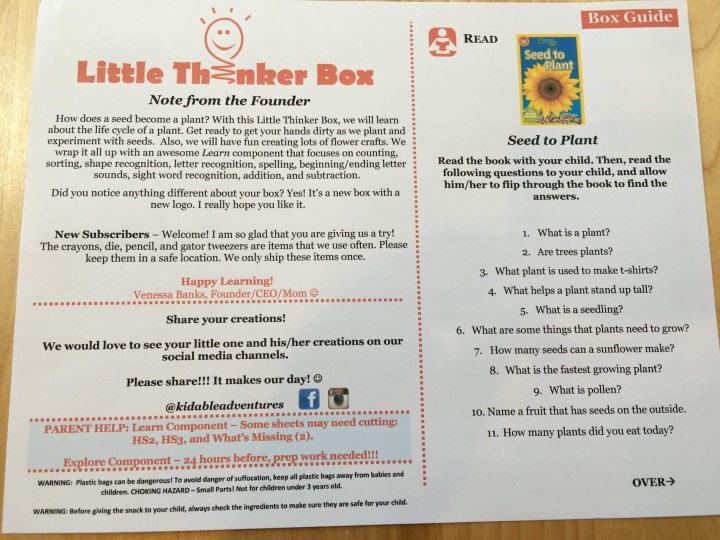
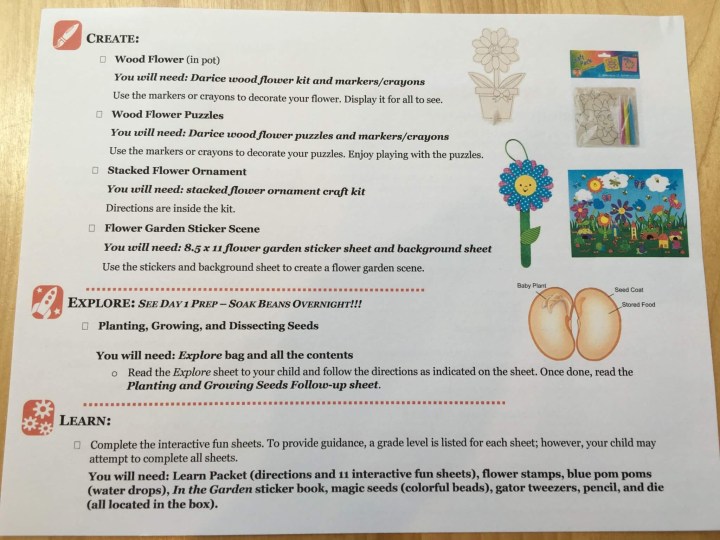
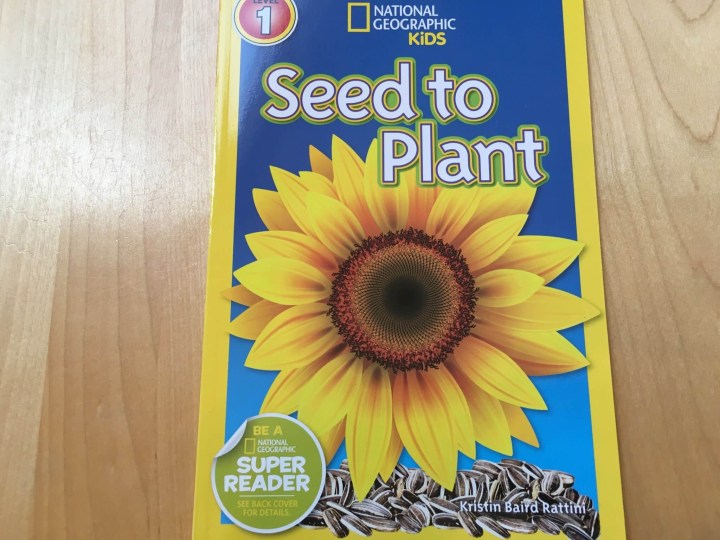

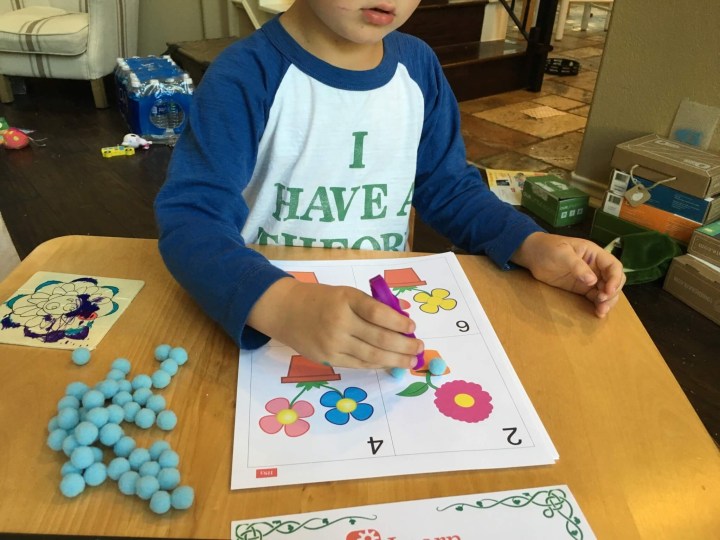
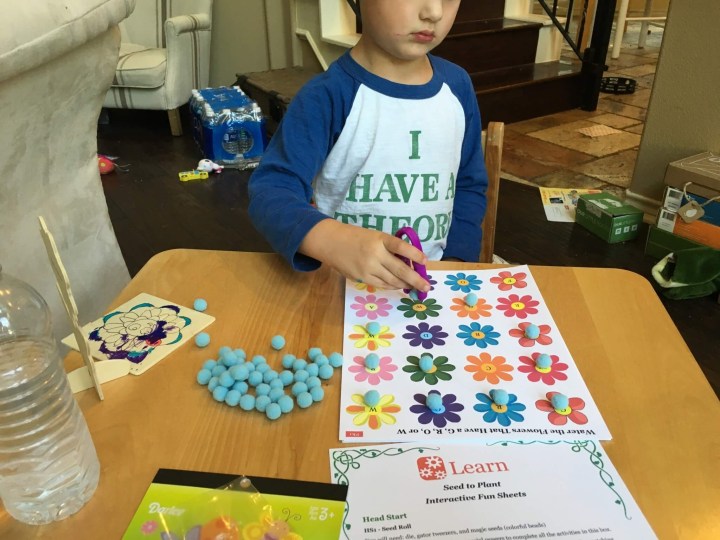
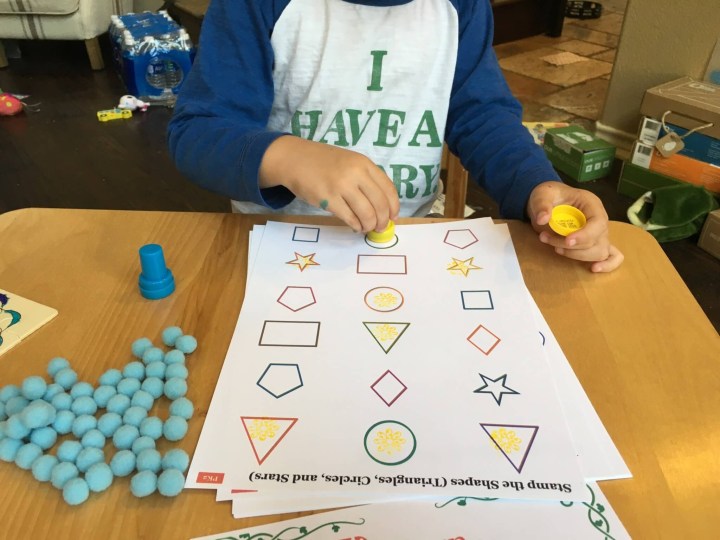


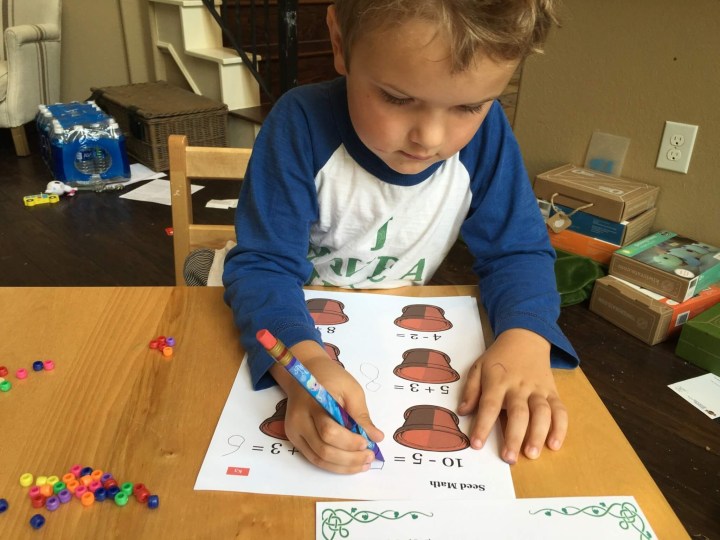
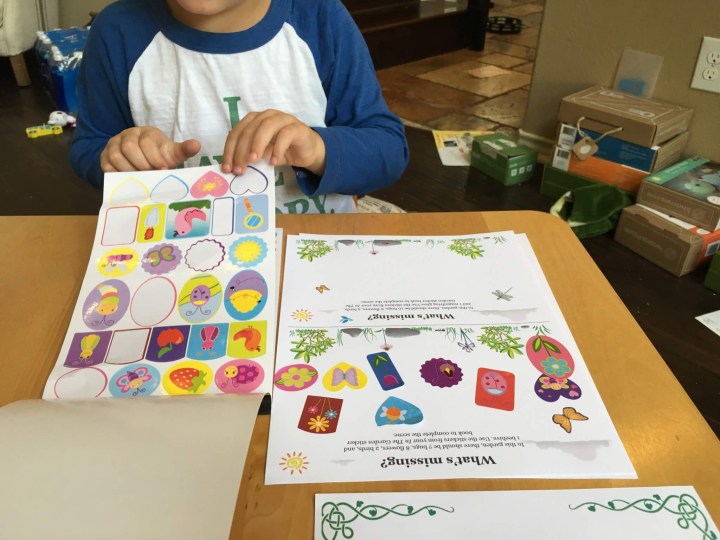




Comments